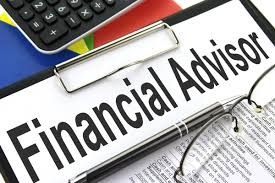Assessing a financial advisor’s communication style and transparency is crucial in establishing a strong working relationship based on trust and understanding. Here are some ways to evaluate these aspects:
- Initial meetings and consultations: Pay attention to how the financial advisor communicates during your initial meetings or consultations. Assess whether they actively listen to your needs and concerns, and if they provide clear and concise explanations of their services, investment approach, and the potential risks involved. A good advisor should be able to communicate complex financial concepts in a way that is understandable to you.
- Ask about their communication process: Inquire about the advisor’s communication process and frequency. Will they provide regular updates on your portfolio and any changes made? Will they proactively reach out to you if there are significant developments or market events? Clarify your expectations regarding communication and ensure that the advisor’s approach aligns with your preferences.
- Request sample reports or client materials: Ask the financial advisor for sample reports or client materials that they provide to their clients. Review these materials to assess their clarity, organization, and comprehensiveness. Look for transparency in terms of investment performance, fees, and any other relevant information.
- Seek client references: Request references from current or past clients of the financial advisor. Contact these references and ask about their experience with the advisor’s communication style. Inquire about the frequency and effectiveness of communication, whether the advisor is accessible and responsive to client inquiries, and if they provide timely updates and explanations.
- Evaluate written communication: Assess the clarity and transparency of written communication from the financial advisor. This includes emails, newsletters, investment reports, and other written materials. Look for clear explanations of investment strategies, risks, and performance. Pay attention to how they address any concerns or questions you have raised in written communication.
- Assess their willingness to educate and empower you: A good financial advisor should not only provide recommendations and advice but also strive to educate and empower you to make informed financial decisions. Evaluate whether they take the time to explain concepts, investment options, and potential risks. Assess their willingness to answer your questions and ensure that you have a good understanding of the strategies being implemented.
- Consider their approach to transparency: Transparency is a key aspect of a strong client-advisor relationship. Discuss the advisor’s approach to transparency regarding fees, conflicts of interest, and any potential limitations or risks associated with their recommendations. A transparent advisor should be open about their compensation structure, disclose any potential conflicts, and provide clear information about the risks and benefits of different investment options.
Remember, effective communication and transparency are essential for building trust and ensuring that you have a clear understanding of your financial advisor’s recommendations and actions. If you have any concerns about communication or transparency, address them directly with the advisor and seek clarification. A good financial advisor should be responsive and receptive to your feedback and take steps to address any areas of improvement.
SHARE
